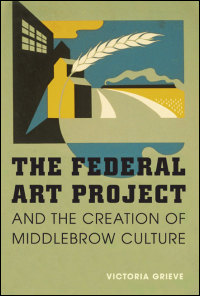 As a historian, I’m not supposed to believe that history repeats itself, but sometimes it’s tempting.
As a historian, I’m not supposed to believe that history repeats itself, but sometimes it’s tempting.
As anyone who reads the newspaper knows, comparisons of the current “economic crisis” and the Great Depression abound. The similarities extend to the cultural realm. Art suffers during hard times: endowments plummet, donations stall, fewer people travel, museums lay off staff and freeze hiring.
In the 1930s, the Roosevelt administration created federal relief projects for artists, writers, actors, and musicians. Community art centers created by the Works Progress Administration’s Federal Art Project offered free art classes, lectures, and traveling exhibitions. Children’s classes were filled to overflowing. Community art centers aimed to do away with the aura of elitism surrounding art museums, to make art accessible to “the common people.”
Today, museums are making similar efforts. The New York Times recently reported that museums are experimenting with innovative ways to make themselves more relevant to a broader audience, and to play a larger role in education. (“Wish You Were Here,” Carol Vogel; “When the Gallery is a Classroom,” Dorothy Spears, March 19, 2009.)
History isn’t exactly repeating itself though. There is telltale evidence of twenty-first century issues. The Oakland Museum in California recently invited visitors to come to the museum using environmentally friendly transportation and wearing sustainable materials like recycled curtains and used clothing. The attraction was an exhibition of mid-20th century fashion, music, art and architecture accompanied by the artwork of 500 local high school students. The museum hopes that by moving “away from the authoritarian voice of a museum” and giving the museum space over to young people and contemporary issues, they will attract new audiences. The MoMA invited 150 people to “put the ‘oM’ in MoMA” with a Saturday morning yoga class. The Hammer Museum at UCLA organized a “bike night,” with valet parking and a free film showing.
Rather than creating arts programs, the Obama administration plans to increase funding for arts education, and museum participation is crucial for success. The High Museum in Atlanta developed an after-school program for elementary students that ends with an exhibit of their artwork. The Miami Art Museum participates in the Brick by Brick project; local artists, designers and educators work with forty students each year to redesign their neighborhoods using laptops, cameras, and video equipment. They learn that “their neighborhoods are not irredeemable, that they can improve.” The Cleveland Museum of Art is building its Lifelong Learning Center to enable visitors to curate virtual exhibits. In 2008, the museum’s distance learning program reached more than 28,000 students. Philips Collection staff created curriculum models for local teachers to participate in a traveling exhibition of Jacob Lawrence’s Migration Series.
Despite these efforts, critics in the 1930s and today maintain that the arts are a non-essential frill. Although it was dropped, one senator proposed an amendment to the economic recovery package that grouped museums with golf courses and casinos as nonessential and therefore ineligible for assistance. Then and now, museums look to “the common man” for sustenance. Let’s hope their efforts outlast the economic crisis.
*****

Victoria Grieve is an assistant professor of history at Utah State University, where she is also curator of twentieth-century West Coast American Art at the Nora Eccles Harrison Museum of Art. Her new book, The Federal Art Project and the Creation of Middlebrow Culture, will be published on April 6, 2009.
